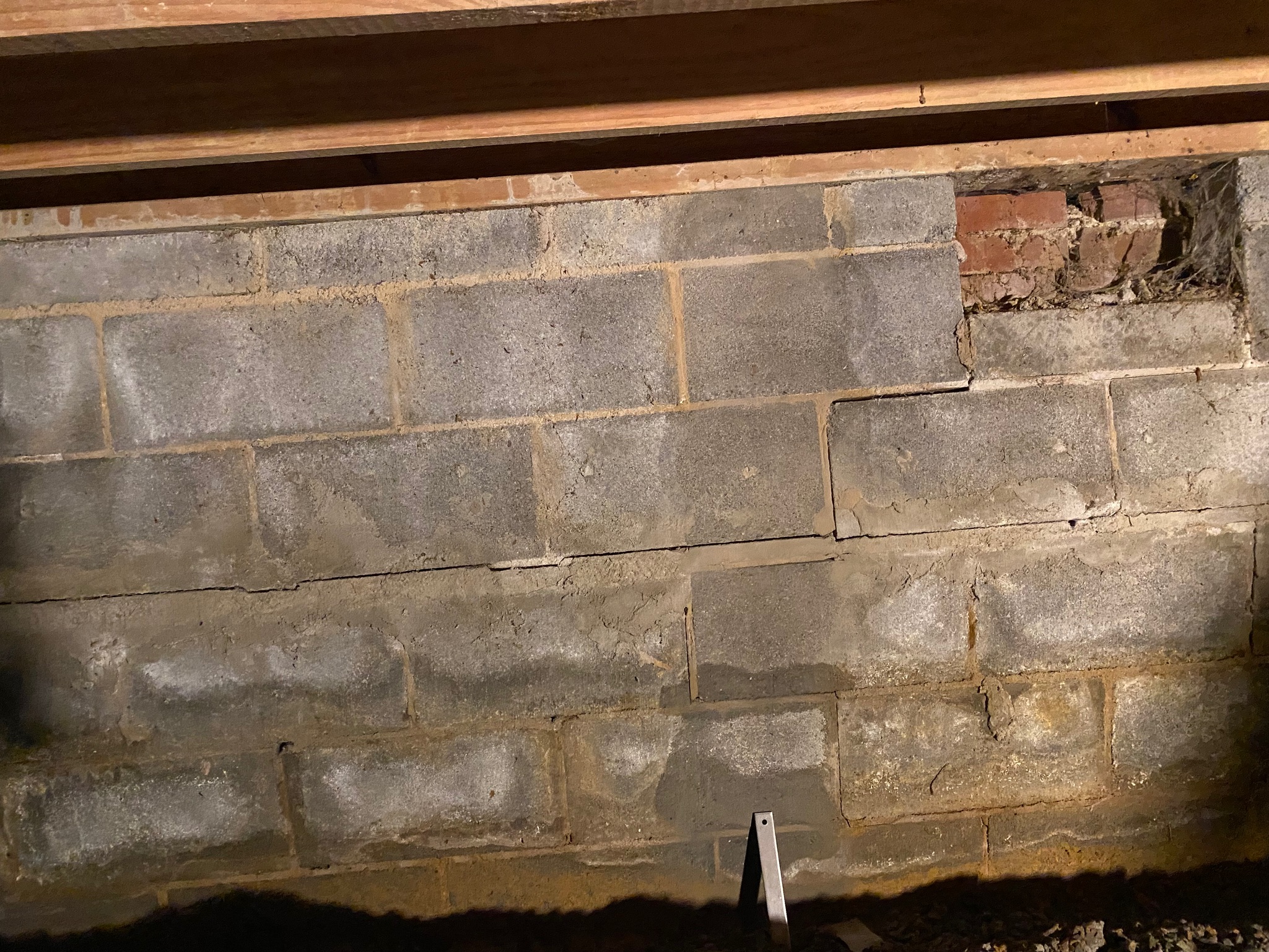
You’ve spotted a wet crack in your basement and the first thing on your mind is fixing it right, isn’t it? Choosing the correct sealant can be a tough call, considering the moisture levels and the size of the crack. While some may swear by the strength and durability of an epoxy for those wider, more substantial cracks, others might lean towards sealants with superior adhesion and moisture barrier properties. But how do you ensure the sealant you select is right for your specific basement conditions? Let’s explore this further, shall we?
Key Takeaways
- Evaluate moisture levels and crack dimensions to select an appropriate sealant such as polyurethane, epoxy, or silicone.
- Ensure the chosen sealant provides strong adhesion, effective moisture barrier, and aligns with long-term basement maintenance goals.
- Prioritize surface preparation by cleaning and drying the area thoroughly for optimal sealant effectiveness.
- Apply the sealant evenly with a caulk gun, completely filling the crack, and adhere to manufacturer’s drying instructions.
- Implement preventive measures such as moisture control and routine inspections to prevent future cracks and maintain sealant efficiency.
Understanding Basement Cracks
Peering into the depths of your wet basement, you may notice cracks riddling your concrete walls or floor. This crack formation isn’t just an aesthetic issue: it can be a sign that your basement’s structural integrity is compromised, leading to bigger problems down the line.
Understanding the nature of these cracks is crucial. They can occur in various shapes and sizes, each with its unique implications. Hairline cracks, for instance, are typically superficial and pose less of a threat to your structural integrity.
On the other hand, horizontal or diagonal cracks can indicate severe pressure or shifting in the foundation, which may require more extensive repairs.
Apart from the direction, the size of the crack can also signal the severity of the problem. Cracks wider than 1/8 inch should raise your concern, as they may indicate a significant structural issue.
Also, any crack that allows water to infiltrate poses a threat, as the water can expand the crack and exacerbate the problem.
In all cases, it’s vital to address these cracks promptly. Not only will this maintain your basement’s structural integrity, but it will also prevent further water damage and potential health hazards.
Causes of Wet Basement Cracks
Before you set out to seal those pesky basement cracks, it’s important to understand what causes them in the first place.
Moisture intrusion is a common culprit. When there’s an excess of water in the soil around your home, it can find its way into your basement, causing cracks.
Foundation settlement and soil movement are two more factors to consider. Over time, your home’s foundation can settle, leading to cracks. Similarly, soil movement due to things like tree roots or heavy traffic can lead to cracks.
Drainage issues can also cause problems. If water isn’t properly diverted away from your house, it can lead to hydrostatic pressure, which can cause cracks.
Temperature fluctuations can wreak havoc as well. As the temperature changes, materials expand and contract, often leading to cracks.
Poor construction contributes too. If your home wasn’t built with proper drainage or waterproofing measures, it’s more likely to develop basement cracks.
Finally, don’t overlook aging materials. Over time, even the best materials can deteriorate and lead to cracks.
Understanding these causes helps you better address and prevent future cracks.
Sealant: An Effective Solution
Sealants stand as a highly effective solution for tackling basement cracks. When chosen correctly, they can effectively halt water leaks and secure the structural integrity of your home. Among the sealant benefits, their ability to provide a watertight seal is paramount. This effectively prevents moisture from permeating the basement, curbing the potential for mold growth and structural damage.
Sealant longevity is another significant benefit. Quality sealants are designed to last, providing a long-term solution to your wet basement woes. They can withstand the test of time, ensuring your basement remains dry and safe for years to come.
To give you a comprehensive understanding about sealant benefits and longevity, let’s have a look at the table below:
| Benefit | Description | Longevity |
|---|---|---|
| Water Resistance | Prevents moisture permeation | Long-term |
| Structural Protection | Shields against structural damage | Long-lasting |
| Mold Prevention | Hinders mold growth | Extended |
| Durability | Withstands wear and tear | Lasts years |
Understanding the effectiveness and benefits of sealants is crucial in making an informed decision for your basement. Therefore, considering sealant longevity and benefits is key when dealing with wet basement cracks.
Types of Basement Sealants
Now we’re going to explore the different types of basement sealants available.
It’s crucial you’re aware of the various options, as each type has its own set of benefits and potential drawbacks depending on your specific circumstances.
From water-based to silicone, and even polyurethane sealants, understanding these differences will help you make an informed decision when selecting the most appropriate solution for your wet basement cracks.
Understanding Different Sealants
When it comes to waterproofing your basement, understanding the different types of sealants available is crucial. Selecting the right sealant isn’t just about filling cracks; you need to consider sealant longevity, compatibility with your basement’s materials, environmental impact, and application techniques.
Here’s a quick rundown of common sealants:
| Sealant Type | Key Features |
|---|---|
| Polyurethane | Excellent flexibility, bonds well with concrete, perfect for non-structural cracks |
| Epoxy | Strong and durable, ideal for structural cracks |
| Silicone | Provides a watertight seal, excellent longevity, but can be difficult to paint over |
| Latex | Easy to apply, clean up with water, but less durable |
Polyurethane and epoxy sealants are common choices for basements. They’re durable, waterproofing membranes that fill cracks effectively. Silicone and latex sealants are also viable options, depending on your needs.
Crack fillers can also be used to fill small cracks and holes. They are easy to apply and cost-effective, but may not offer the longevity of more specialized sealants.
Selecting Appropriate Sealants
Having explored the range of sealants and their distinctive features, it’s time to make an informed decision about the most suitable one for your wet basement cracks. Understanding sealant properties is crucial to this selection process.
Firstly, you need to consider the level of moisture in your basement. Polyurethane sealants are highly recommended for high moisture areas, due to their water-resistant properties. For areas with less moisture, acrylic or silicone sealants could be equally effective.
Secondly, take into account the size and depth of the crack. Epoxy sealants, known for their strength and durability, are ideal for filling wider, deeper cracks. For smaller cracks, a flexible sealant like polyurethane or silicone would be more appropriate, as it can expand and contract with the crack.
Lastly, surface preparation shouldn’t be overlooked. Ensure that the area to be sealed is clean, dry, and free of any loose material. A poorly prepared surface can compromise the effectiveness of the sealant.
Choosing the Right Sealant
Now that you’re familiar with the different types of basement sealants, it’s crucial to select the one that’s most suitable for your specific needs.
Consider factors such as the extent of the wetness, the type of crack, and the material of your basement walls.
Once you’ve made a decision, understanding the correct application process will ensure a long-lasting and effective seal.
Understanding Basement Sealant Types
You’ve recognized the need to address those pesky wet basement cracks, and that’s a great first step. Now, let’s delve into understanding the different types of basement sealants available and their respective properties.
Sealants fall into two broad categories: penetrating and non-penetrating. Penetrating sealants, as the name implies, soak into the concrete to form a chemical barrier that keeps water out. They’re durable, long-lasting, and don’t peel off, making them a good choice for crack repair.
Non-penetrating sealants, on the other hand, form a physical barrier on the surface to block water. They’re easy to apply but mightn’t be as durable as their penetrating counterparts.
Within these categories, there are several types. Epoxies are a type of penetrating sealant known for their strength and adhesion. They bond well with concrete and are highly resistant to water.
Polyurethane sealants, another type, offer excellent flexibility, which is beneficial as basements often experience shifting and settling.
Silicates, another type of penetrating sealant, react with concrete to create a hardened surface resistant to water and abrasion. Understanding the properties of these sealants will guide you in making the right choice for your basement crack repair.
Selecting Suitable Sealant
Understanding the different types of basement sealants is only half the battle. You also need to know how to select the right one for your specific needs. The key factors to consider when choosing a sealant are its properties and its ability to create effective moisture barriers.
Sealant properties can vary widely, so it’s important to choose a product that’s appropriate for your particular situation. For instance, some sealants are designed for minor, surface-level cracks, while others are better suited for larger, deeper cracks.
The sealant you choose should also be resistant to the specific conditions in your basement. If your basement is prone to flooding, for example, you’ll need a sealant that can withstand constant water pressure.
Moisture barriers are another critical aspect to consider. A good sealant will create a barrier that prevents water from seeping into your basement. This is vital in preventing further damage to your basement and maintaining the structural integrity of your home.
Application Process for Sealant
Once you’ve zeroed in on the right sealant for your wet basement cracks, it’s time to roll up your sleeves and dive into the application process. The application techniques vary based on the sealant selection, but they generally involve preparing the surface, applying the sealant, and allowing it to dry.
First, prepare the surface. This involves cleaning the area to be sealed and ensuring it’s dry. This step is crucial as it aids in better adhesion of the sealant.
Next, apply the sealant. Use a caulk gun for application, ensuring that the sealant is spread evenly and fills the crack completely.
Lastly, allow the sealant to dry. This can take anywhere from a few hours to a couple of days, depending on the sealant used and the conditions of your basement.
Here’s a quick table to guide you through the process:
| Steps | Details |
|---|---|
| Preparation | Clean and dry the area |
| Application | Apply sealant evenly with a caulk gun |
| Drying | Allow sealant to dry completely |
Application Process for Sealants
Regularly applying sealants to wet basement cracks can significantly extend their lifespan and maintain the integrity of your home’s foundation. However, application techniques and the durability of the chosen sealant play a critical role in the success of this preventative measure.
You’ll first need to ensure the surface is clean of any dirt or loose particles, as these can interfere with the sealant’s adhesion. Use a wire brush or a similar tool to scrub the area.
Once you’ve prepped the surface, it’s time to apply the sealant. This is usually done using a standard caulking gun. It’s essential to fill the crack completely to create a waterproof barrier.
The application techniques you use can influence the sealant’s durability. Applying the sealant in a smooth, even layer and ensuring it fills the entire crack will maximize its lifespan.
Rapid or inconsistent application can lead to gaps or weak spots, compromising the sealant’s effectiveness.
Maintenance and Care Tips
A handful of maintenance and care tips can go a long way in extending the life of your sealant. To ensure the longevity of your sealant, regular care is crucial. Routine inspections are the first step. Regularly check for visible signs of wear or peeling. If you notice any, it’s time for a touch-up.
Moisture management is another significant aspect. Remember, the sealant is there to keep water out, not trap it in. Always ensure your basement is well-ventilated to prevent moisture build-up. This could otherwise compromise the sealant’s efficiency.
To help you remember, here’s a handy table:
| Maintenance Task | Frequency | Importance |
|---|---|---|
| Routine inspections | Every 3-6 months | Detects early signs of wear |
| Moisture management | Continuous | Prevents sealant damage |
| Touch-ups | As needed | Prolongs sealant life |
| Cleaning | Every 6-12 months | Keeps sealant effective |
Preventing Future Basement Cracks
To avoid the hassle of frequently repairing and resealing, it’s crucial to implement measures that prevent future basement cracks. Crack prevention isn’t just about fixing current issues, but ensuring they don’t recur. This involves a proactive approach, focusing on the root causes of these cracks, such as moisture and pressure.
Moisture control is paramount in preventing basement cracks. Keep your basement dry by maintaining the gutters and downspouts, ensuring water is directed away from your home’s foundation. Install a sump pump for extra insurance against water accumulation.
Regularly check for plumbing leaks, since even small ones can lead to big problems over time.
Next, pay attention to your basement’s pressure situation. Soil pressure can exert force against your basement walls, leading to cracks. To manage this, consider installing a pressure relief system or a retaining wall.
Frequently Asked Questions
What Is the Average Lifespan of a Basement Sealant?
The lifespan of your basement sealant largely depends on the type of sealant used and the application techniques.
Typically, a high-quality polyurethane sealant can last up to 10 years if applied correctly.
Remember, it’s not just about choosing the right sealant, but also applying it correctly to ensure its longevity.
Regular inspections and maintenance can also help extend the life of your sealant.
Can Basement Sealants Withstand Extreme Temperature Changes?
Yes, good quality basement sealants can withstand extreme temperature changes.
They’re designed to provide durable, flexible seals that adapt to temperature fluctuations.
However, not all sealants offer the same level of temperature resistance, so you’ve to carefully select a product that suits your local climate conditions.
Always remember, a sealant’s durability and its ability to resist temperature changes are crucial for maintaining a dry and healthy basement.
Is It Necessary to Hire Professionals for Sealant Application?
You don’t necessarily need to hire professionals for sealant application. With the right tools and DIY techniques, you can tackle this task yourself.
However, consider the complexity of the job and your experience level. If the cracks are widespread or in hard-to-reach places, a professional’s help may be beneficial.
While you’ll incur costs, you’re paying for their expertise, which can ensure a proper seal, preventing further damage and potentially saving you money in the long run.
Are There Any Health Risks Associated With Using Basement Sealants?
Yes, there can be health risks tied to using basement sealants.
You need to consider sealant safety. Some products contain volatile organic compounds (VOCs) which can cause toxic exposure if you’re not careful. Symptoms might include headaches, dizziness, and respiratory issues.
Always ensure you’re using proper ventilation and protective gear when applying these sealants. It’s best to choose low-VOC or VOC-free options when available.
How Does Humidity Affect the Effectiveness of Basement Sealants?
Humidity can drastically impact the effectiveness of your chosen basement sealants.
When it’s humid, sealant types like acrylics and silicones mightn’t adhere properly, reducing their efficacy as moisture barriers.
Therefore, it’s crucial to apply sealants during low humidity conditions.
If you can’t control the humidity, consider using a sealant specifically designed for wet conditions.
Conclusion
So, you’ve got the knowledge to tackle those pesky wet basement cracks. Remember, it’s all about choosing the right sealant for the job. Epoxy is your friend for wider, deeper cracks, but always consider the sealant’s properties and your basement’s moisture levels. Don’t skimp on surface prep either – it’s key for optimal adhesion. And once you’re done, keep up with regular maintenance and prevention. Here’s to a dry, safe basement!

Seal-tite Basement Waterproofing Co. is a full service basement environment contractor. We carry an A+ Better Business Bureau rating. We repaired over 40,000 homes and structures in Virginia, West Virginia, Tennessee, and North Carolina. We are fully insured and licensed. We have worked in all types of locations, including residential and commercial locations, government agencies, colleges, hospitals, churches, and condo associations.
Seal-tite® offers a lifetime transferable warranty. We carry a Class A Contractor’s License and we are fully insured. Our satisfied customers range from government agencies to businesses, hospitals, colleges, churches, and thousands of homeowners. Your home is probably the single largest investment you will make in your lifetime. Don’t wait, call Seal-tite® to help make your home dry, safe and livable.

